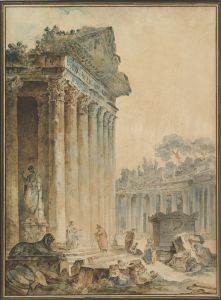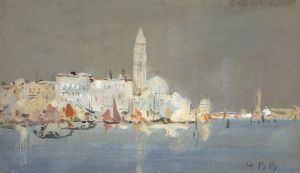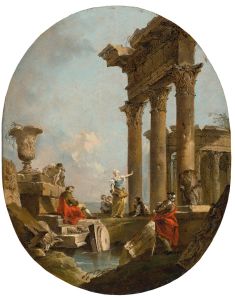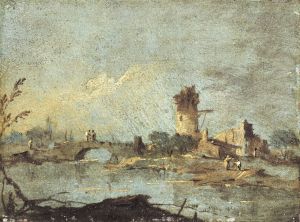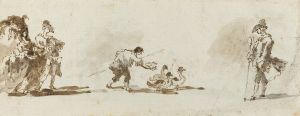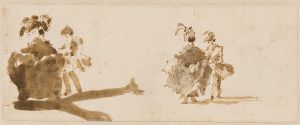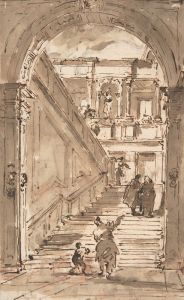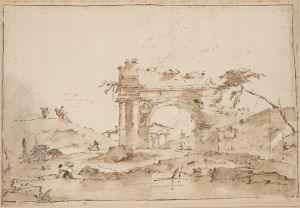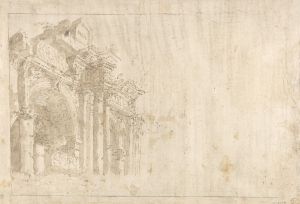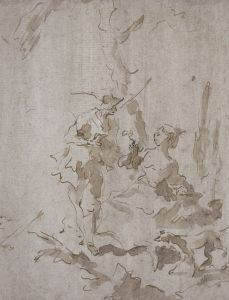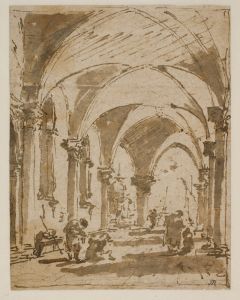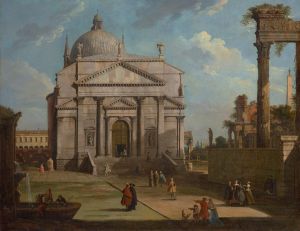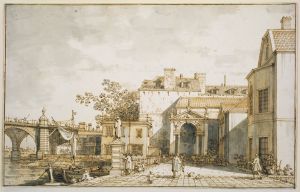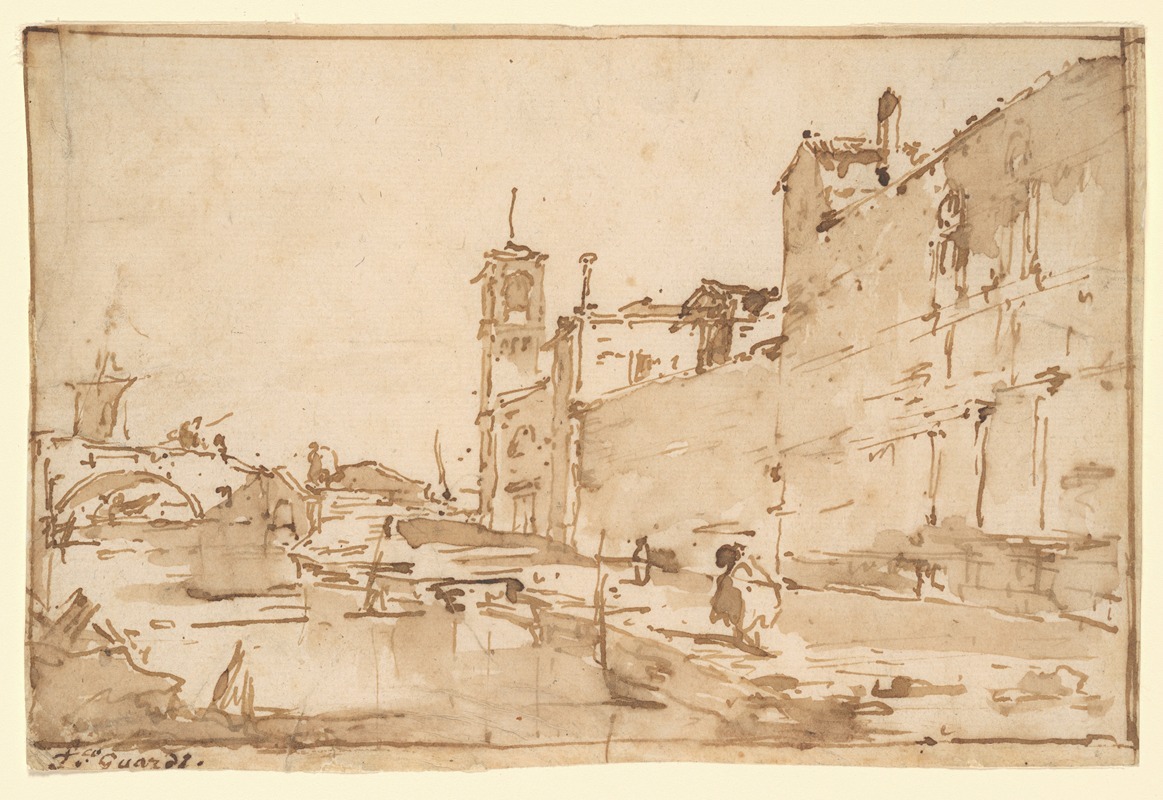
A Venetian Capriccio; A Rio Leading to a Bridge
A hand-painted replica of Francesco Guardi’s masterpiece A Venetian Capriccio; A Rio Leading to a Bridge, meticulously crafted by professional artists to capture the true essence of the original. Each piece is created with museum-quality canvas and rare mineral pigments, carefully painted by experienced artists with delicate brushstrokes and rich, layered colors to perfectly recreate the texture of the original artwork. Unlike machine-printed reproductions, this hand-painted version brings the painting to life, infused with the artist’s emotions and skill in every stroke. Whether for personal collection or home decoration, it instantly elevates the artistic atmosphere of any space.
Francesco Guardi's painting A Venetian Capriccio; A Rio Leading to a Bridge is a work that exemplifies the artist's mastery of Venetian vedute, or cityscape painting. Guardi (1712–1793) was an Italian painter of the late Baroque period and is considered one of the most significant Venetian artists of the 18th century. He is particularly known for his capricci, imaginative compositions that blend real and fictional architectural elements, as well as his atmospheric depictions of Venice.
This painting, like many of Guardi's works, captures the essence of Venice through its interplay of light, water, and architecture. The term "capriccio" refers to the imaginative nature of the composition, where the scene may not represent an exact location in Venice but rather a creative combination of architectural motifs and urban elements. In this case, the painting depicts a canal, or "rio," leading to a bridge, with buildings lining the waterway. The scene is rendered with Guardi's characteristic loose brushwork and attention to the effects of light and shadow, which lend the painting a sense of vibrancy and movement.
Guardi's style is often contrasted with that of his predecessor, Canaletto, who was known for his precise and detailed depictions of Venice. While Canaletto's works were often highly accurate and topographical, Guardi's paintings are more atmospheric and painterly, focusing on the mood and essence of the city rather than its exact geography. This stylistic difference is evident in A Venetian Capriccio; A Rio Leading to a Bridge, where the emphasis is on the interplay of light and the shimmering reflections on the water, rather than on architectural precision.
The painting is an example of Guardi's later work, during which he developed a more fluid and expressive technique. This approach was well-suited to capturing the ephemeral beauty of Venice, a city defined by its unique relationship with water and light. Guardi's works were highly sought after during his lifetime and continue to be celebrated for their ability to evoke the romantic and dreamlike qualities of Venice.
The exact date of creation for A Venetian Capriccio; A Rio Leading to a Bridge is not definitively known, as is the case with many of Guardi's works. However, it is generally attributed to the latter part of his career, when his style had fully matured. The painting is now held in a private collection or museum, though its current location and provenance may vary depending on recent acquisitions or exhibitions.
Francesco Guardi's contributions to Venetian art remain significant, and his capricci, including this painting, are considered important examples of his ability to blend imagination with the visual poetry of Venice.





